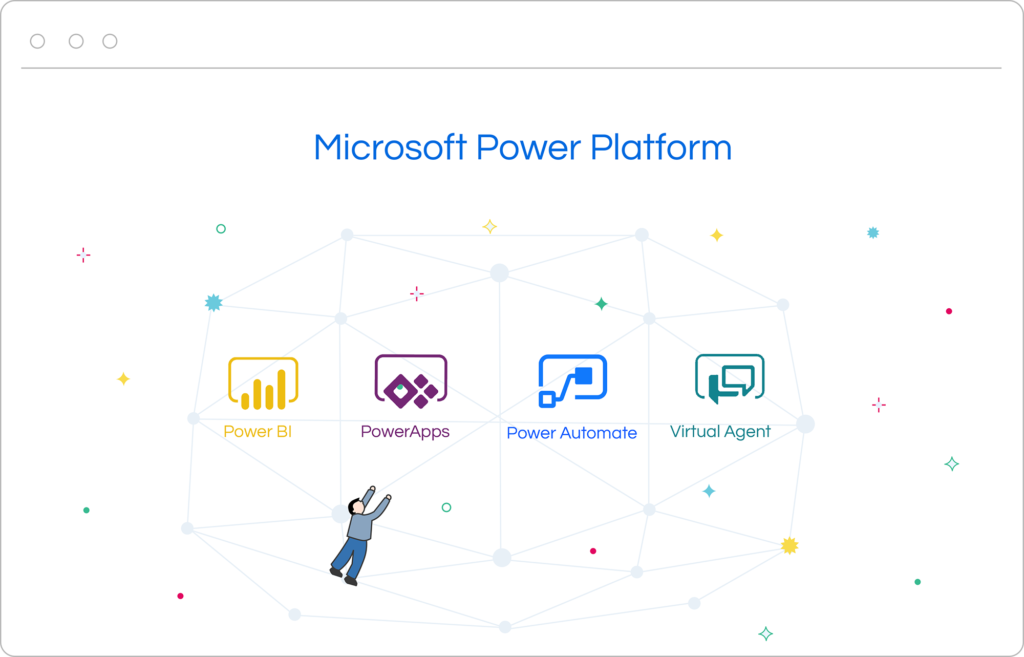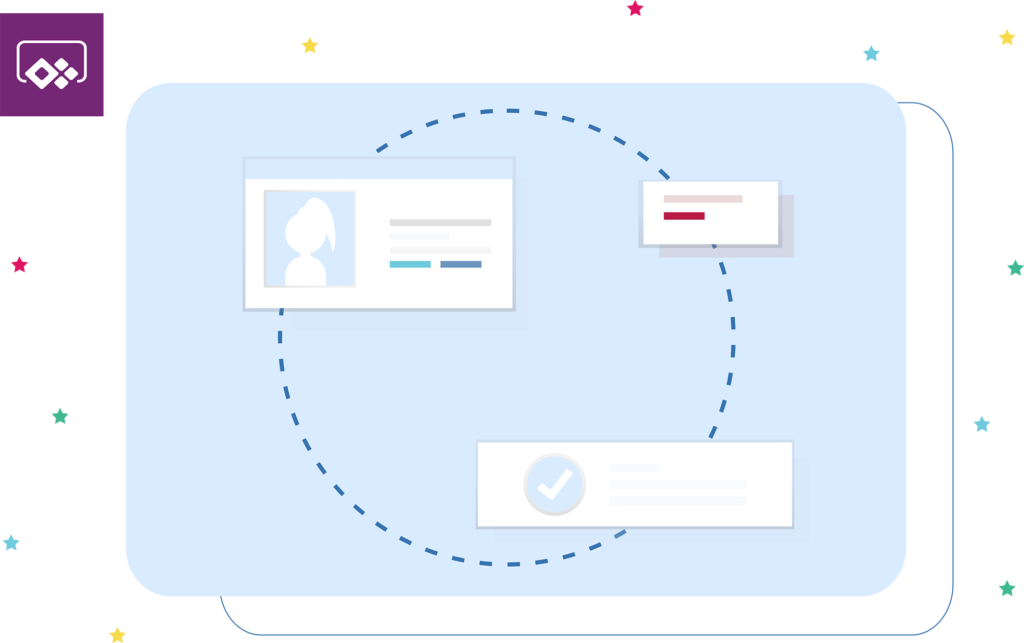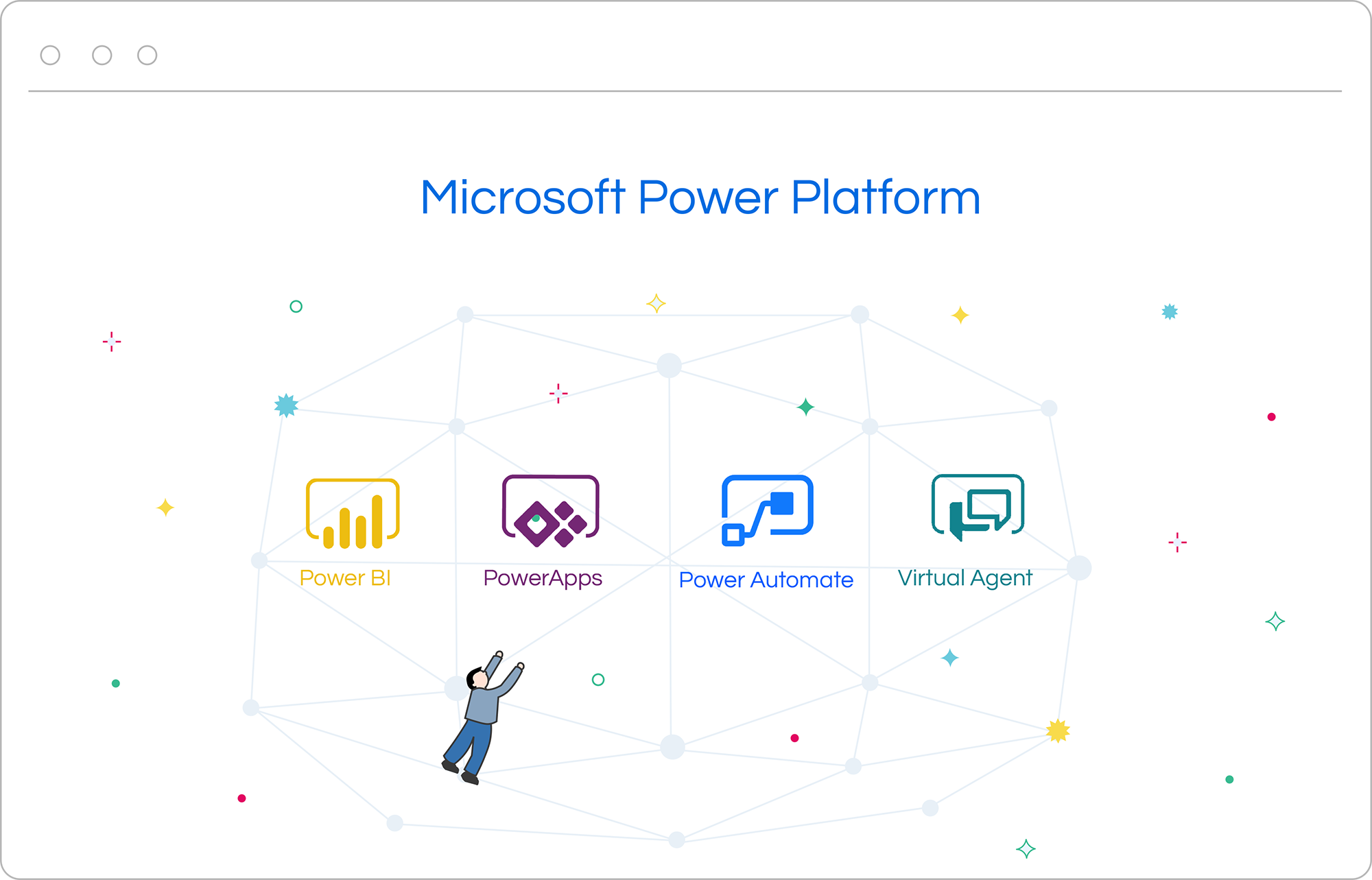The Power Platform is a software brick that comes with the Microsoft 365 suite. It is composed of 4 tools: Power BI, Power Apps, Power Automate and more recently Power Virtual Agent.
These tools offer connectors to all Office 365 services but also to third party tools such as Trello for task management, Google Apps, Jira etc...
Microsoft's idea is to have reports, processes and applications built quickly by power users. That is to say, users from the business who have an attraction for technology.
I will present you a use case per tool to show you how they can easily improve collaboration in your company. I'm deliberately not talking about Virtual Agent because I have no feedback on it.

Analyze - Power BI
Power BI allows you to create dashboards. For the record, it is basically an Excel add-in. The use case that comes up very regularly is the famous pivot table. Personally, I find it very complicated to model in Excel.
Power BI also allows you to connect to different data sources (hundreds of connectors) and cross-reference them. You can also share your reports in secure spaces (like Teams or SharePoint sites). I find this last point particularly interesting from a collaboration perspective. In a Teams team, team members can use document management, conversation threads, common note taking, etc. They can also have access to spreadsheets and other tools. They can also have access to dashboards related to their context in one click.

Act - Power Apps
Power Apps allows you to create "low code" business applications (without development) for computer or smartphone. The idea is to quickly develop a business application and avoid large investments in development.
A common use case is the development of a form application that allows users to enter their activity. The application can be connected to many different data sources. For example, to a SharePoint list that will store the different records. Like Power BI, the application can be integrated into a Teams team in 2 clicks. The tool is also particularly suited to the agile approach. We quickly have a product that users can manipulate. With each iteration, users can see a real change.
However, the strength of Power Apps lies in its simplicity. It is not designed to develop complex ERP-type applications. Beyond a certain number of screens, components or data sources, it becomes very complicated to maintain the application.

PLC - Power Automate
Power Automate (formerly Flow), allows to automate processes. The idea is to have a trigger (manual or automatic) followed by a list of processes. As with the rest of the Power Platform suite, there are a large number of connectors for the trigger and for the processes.
A fairly common use case, linked to collaboration, is the following: sending an email to a defined address (automated trigger) which leads to the creation of a task in Planner (processing 1) and then sends a message to a Teams team with a link to the task (processing 2). We often see in companies scenarios of manual actions (loss of quality) and repetitive actions (waste of time). Power Automate is made to answer this kind of problem.

Virtual Agent
In addition Virtual Agent enriches your collaboration experience with chatbots.

What kind of governance to have with Power Platform tools?
The approach to take to understand these tools is that it is the data that governs the IT strategy. And the tools are there to manipulate this data in the way you want (3 A rule):
- Analyze: to generate key indicators from this data with Power BI.
- Act: to enrich data repositories by business users with Power Apps.
- Automate: to automate processes related to this data with Power Automate.
In addition, the tools can be used independently of each other. However, I find that their strength lies in their complementarity.
I implemented a use case that illustrates this. The idea is to moderate the creation of Teams with the Power Platform in order to avoid chaos in the Teams.
Users enter in a Power Apps application the information of the team they want to create (team name, public/private, team members, etc...). The registration of the form triggers a Power Automate flow. This flow requests approval from an ISD stakeholder who authorizes or refuses the creation of the team. Depending on his choice, the team is created or a refusal message is sent to the applicant. In addition, Power BI allows you to monitor the approvals in progress or completed, as well as the various teams created, in the form of a dashboard.
Power Users must be able to handle the Power Platform suite. With hindsight, this is not so simple, mainly for two reasons:
- The first one is purely technical. For a non-developer, it is not that simple to integrate a REST web service in Power Automate or to understand the different events of Power Apps components.
- The second is more organizational. CIOs (this is particularly true in SMBs and SMEs) want to have control over all of the company's applications to guarantee the proper functioning and consistency of the information system. This also applies to the Power Platform. And the element that accentuates this phenomenon is the complexity of licensing. If the IT department manages the licensing budget, it is quite understandable that they want to have control over the applications created.
In summary, the Power Platform allows you to quickly add value to your company's collaboration. However, even if they are easy to learn, the tools of the Platform suite can quickly require technical and/or organizational expertise (work on data sources, connectors to third-party tools, the logic of integration with the information system, best practices for use by different types of employees and governance). Do not hesitate to seek the support of companies specialized in the subject to take full advantage of it in the long term.

